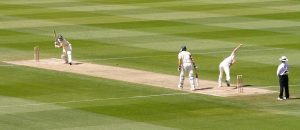what are the rules for cricket: Cricket is a game loved by millions of people around the world, known for its rich history, strategic depth and unique blend of patience and excitement. The game is played in different formats, but the basic rules remain consistent across these variations. Whether you are a beginner or a seasoned fan looking for a refresher, understanding the basic rules of cricket is essential.

Basic structure
Cricket is generally played between two teams, each consisting of 11 players. The game is usually played on a circular or oval field with a rectangular 22-yard pitch in the center. There are two bails on top of three wooden stumps at each end of the pitch, which form the wicket.
Objectives and Scoring
The primary objective in cricket is to score more runs than the opposition team. A run is when a batsman hits the ball and successfully moves to the opposite end of the pitch. Runs can also be scored in multiples if the batsmen run back and forth or by hitting the ball to the boundary (four runs if it hits the ground before crossing the what are the rules for cricket boundary or six runs if a six is missed before crossing the boundary). soil).
Game format
Test Cricket:
The longest format, lasting up to five days, where each team has two innings.
One Day International (ODI): Teams are limited to 50 overs each, completed in one day.
T20 (T20):
Each team has a single innings limited to 20 overs, a fast-paced game often lasting around three hours.
General rule toss
A match starts with a coin toss and the winning captain decides whether to bat or bowl first. This decision is tactical and may be influenced by pitch conditions, weather and team strength.
Batting
Each team bats in two innings (in Test cricket) or one innings (in ODIs and T20Is). Anytime two batsmen enter the field. The primary aim of batsmen is to score runs while protecting their wicket from the ball.
Bowling
A bowler delivers the ball to the batsman, aiming to hit their stumps, trap them leg before wicket (lbw), or cause them to make a mistake that leads to a catch. Each bowler can bowl six balls per over and different bowlers can be used throughout the innings.
Fielding
The aim of the fielding team is to prevent runs and dismiss the batsmen. Players are strategically placed around the field to catch the ball, prevent it from reaching the boundary or return it to the wicketkeeper or bowler to attempt a run out.
What are the rules for cricket

There are different ways to dismiss a batsman:
BOLD: The ball hits the stumps and moves the bails.
Catch: A fielder catches the ball directly off the bat without touching the ground.
Leg Before Wicket (LBW): A ball hit by the leg of the batsman which hits the stumps.
Run out: A fielder hits the stumps with the ball while the batsmen are trying to run out.
STUMPED: The wicketkeeper cancels the bail when the batsman is outside the crease.
Hit wicket: The batsman moves the bails with his body or bat while playing the shot.
Ball Handling: The batsman intentionally touches the ball with their hands.
Obstruction on the field: The batsman deliberately obstructs a fielder.
Overs and innings
In limited overs cricket (ODI and T20), each team bowls a fixed number of overs (50 and 20 respectively). A bowler has six valid deliveries in an over. Test cricket has no overs limit and each team has two innings to score runs.
Additional rules
No Ball: A delivery that is considered illegal (eg, overstepping the crease) is a free hit for the batsman.
Wide Ball: A delivery that is too far from the batsman to hit is called a wide and results in an extra run and an extra ball.
Dead ball: A situation in which the ball is not in play, often due to injury or other obstruction.
Umpire and Review
Two field umpires supervise the match by ensuring that the rules are followed. In addition, a third umpire (using video technology) assists in close decisions. Teams are allowed a limited number of reviews to challenge the decisions of on-field umpires using the Decision Review System (DRS).
The rules of cricket may seem complicated, but they form a framework that unites skill, technique and sportsmanship. Understanding these fundamentals enhances the what are the rules for cricket appreciation of the game’s nuances and the excitement of its play. Be it the endurance of a Test match, the tactical battle of an ODI or the explosive action of a T20, cricket offers something for every sports enthusiast.